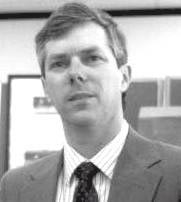 |
Author Michael Harling for NYCHS' Excerpts Presentation of |  |
 |
Author Michael Harling for NYCHS' Excerpts Presentation of |  |
|
If you view history with an eye toward learning from its mistakes, there are many lessons to be garnered from the story of the Parkes and New York’s Identification Bureau. The one that leaps to my mind this morning—straight from the web-pages of CNet—is that, for technology to be truly useful, standards need to be set, and adhered to. I am referring to the current battle between Microsoft and AOL over Instant Messaging protocols. Last year I might have been referring to Web browsers, and prior to that, the struggle between Microsoft and Apple. While the quest for power and money certainly fuels these feuds, they come about because of one, common sense consideration: in order for the world community to best benefit from these tools, they need to function the same way for everyone. The Parkes, New York State’s Identification Bureau and, ultimately, the entire identification community were blind-sided by this phenomenon. It wasn’t entirely their fault. They were, after all, riding the first ripples of what would grow into the tidal wave of technology currently carrying us into the next millennium. They had no frame of reference, no way of predicting where this new-found knowledge might lead them, and the idea of a world-community was still a bit outside of their ability to comprehend. Therefore, early fingerprint enthusiasts thought nothing of devising their own systems as soon as they grasped the concept of fingerprint identification. The Henry System was neither the first, nor the best, classification formula to be invented, and Parke’s American System was certainly not the only knock-off. While Henry was still struggling with the notion of a fingerprint file, Juan Vucetich was operating a fully functional, yet totally ignored, fingerprint bureau in Argentina, and once fingerprinting became the rage, a number of identification bureaus, rather than adopting someone else’s system, decided to concoct their own. The result was confusion. Flake-Connelly adherents were unable to read American System classifications and Henry-schooled technicians could not decipher Vucetich’s primaries, etc., etc., etc. The parallels between Microsoft and Apple are as numerous as they are obvious, so I won’t belabor them except to note that Henry’s System had the advantage of being associated with a large, established organization (Scotland Yard) and Parke’s American System had the advantage of being technically superior. Parke also had the advantage of being the first to institute a fingerprint identification system in the United States and, in 1904, the American System seemed poised to corner the North American market. What turned the balance in favor of the Henry system was another oft-repeated phenomenon: the case of Superintendent Collins. Collins, like many managers confronted with unexpected opportunity, found himself in the position of having the most influence over the direction this new technology would take while at the same time possessing the least amount of understanding of it. His uninformed decisions ensured the permanence of the American System and at the same time reduced its potential. Relegated to a fraction of the identification community, the American System remained a classification anomaly until a new technology—based on minutia points rather than classification formulas—made all fingerprints, once again, equal. If there is anything to be gained from this story, it is the conviction that we must learn to reach beyond our personal bias toward the best interests of the identification community, and the certainty that this will not happen. As minutia-bases systems and DNA technologies proliferate, new ideas, like fingerprint classification systems at the turn of the century, will arise at cross-purposes to one another. Sometimes the superior systems will remain at day's end, but more often longevity will be determined by chance. As an historian, I am all too familiar with the sometimes arbitrary
ways our past decisions have come about and where they have led us.
I am therefore chary of taking on the role of prophet in predicting emerging trends and where they might take us. I can only hope that those forward thinkers who are shaping the next wave of technology look back often enough to learn from the past so they can more clearly see where they are leading us.
Michael Harling
|